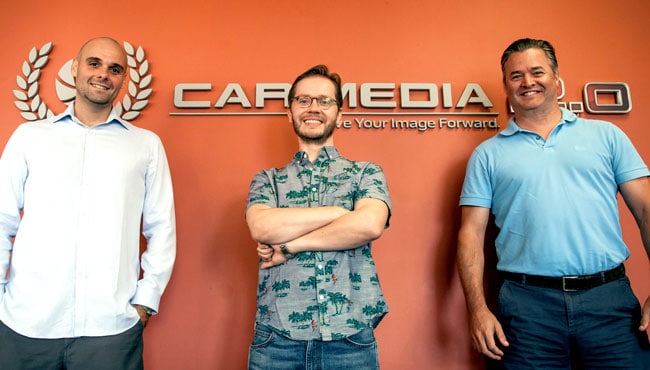
An Ontario-based provider of high-resolution digital photos of new and used cars is helping dealers increase interest and sales
The use of stock images for new and used online vehicle listings can negatively impact a dealership’s business, whereas custom quality photographs can actually help improve sales.
Research shows that, not only do stock photos struggle to rank high in image searches — they are also quickly losing their appeal with consumers.
It’s one of the reasons why Car Media 2.0, an Ont.-based service provider of professional, digital photographs for new and used vehicle listings, is drumming up so much business.
According to the company’s Founder and President Bart Tecza, they were able to capitalize on a concept that not many dealers or third party car listing sites were fully using when the business launched — that consumers want good quality custom images.
“Some things are fundamental in life, period, and to that I would describe quality,” said Tecza in an interview with Canadian auto dealer. “If you can deliver quality, and consistency as well, that has a life of it’s own and it travels all by itself.”
Tecza’s company has been operational for six years. One of its primary goals is to get consumers excited about the cars they are shopping for online. Doing this involves the use of custom, high-resolution new and used vehicle images and the implementation of more suitable, engaging backdrops.
As for dealers, the idea is simple: if they can increase the interest of their cars for consumers, then they will increase their sales.
That concept has allowed Car Media 2.0 to grow over the years to include 25 full-time employees, and approximately 150 photographers and 300 clients across the country — and all thanks to referrals.
Tecza originally started the business by visiting dealerships and making the case for having a professional photographer shoot images of the vehicles, instead of using traditional stock images or low-quality photos taken by the dealer in poor lighting conditions, and with a less-than ideal background. Over time, and with the clients Tecza won over, he was able to gather data and conduct A/B tests that suggested his method actually did help boost sales.
In fact, one of his clients — Oshawa-based Ontario Motors — was among the first stores to adopt the Car Media 2.0 method for both new and used cars. Within three months, the dealership sales jumped dramatically, according to Tecza. “If you’re able to represent inventory better than the business across the street, you’re bound to get the attention. Especially if around you no one is doing it — and if that radius is large.”
He adds that others clients have also experienced increases in sales after adopting the company’s services. “At the beginning, the numbers spiked through the roof,” said Tecza. “I had sales managers, in the form of testimonials, reporting 15, 20-25 per cent spikes in sales to their previous years after joining Car Media 2.0.”
The company offers several packages based around their initial service offering of having a professional photographer visit the dealership twice a week, although Tecza says the frequency can be adjusted. Graphic designers then work on the images to ensure delivery to the client within 24 hours for next-day delivery. These are high-resolution photos (3,000 x 2,000 pixels) that can be uploaded directly to the dealer’s listing website by Car Media 2.0 staff to save them the hassle of doing it themselves.
All the photos are adjusted to appear consistent, with backgrounds replaced, seasonally adjusted, and vehicle images are optimized (colour and contrast corrected), according to Randy Price, Head of Sales and Business Development at the company. “It’s all about the ideal consumer experience.”
Price said the entire process is coordinated through the company’s photography department and an online tool known as 2.0 Hub. An app, created as an extension of the service, is also available.
“It’s a tool that we developed that can run on an iPhone (and soon Android) that allows our photographers and dealership staff, should they choose to use self-service, to actually capture the video in a consistent manner — shooting a sequence of photos that allows them, using something of a paint-by-numbers approach, to start with the exterior of the vehicle and work their way around and then shoot pictures of the interior,” said Price.
The app has allowed the company to grow beyond Canada and extend its services into the United States. There is also a larger plan to push beyond the U.S. and into other markets globally in the coming months, and to localize the app for these specific areas.
A full suite of products, which also includes a video offering that is currently available, will be deploying over the next few months in Canada as well. In the more immediate future, the company also plans to deploy a product in Q4.
















